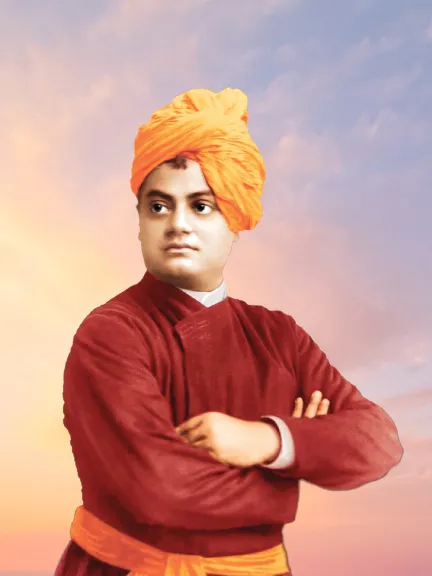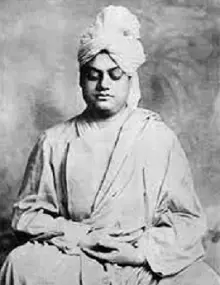Swami Vivekananda Essay for Students and Children
Essay on Swami Vivekananda: Swami Vivekananda was a great religious leader, philosopher, and person with strong morals. In this essay, we talk about the life of swami Vivekananda and 13 amazing facts about them. You can also find more Essay Writing articles about events, people, sports, technology, and many other things.
Fairs have been a part of cultures all over the world for a long time. Where else can you go to have fun, eat, and do business all at the same time? There are many countries, cities, and small towns in the world. In many cultures around the world, fairs are a place where lots of people get together and have fun. Let’s look at these long and short essays that will give you an idea of what Essay on Fair is all about.
Long Essay on Swami Vivekananda Life in English
Swami Vivekananda, whose real name was Narendranath Datta, was a famous nationalist leader. Vivekananda was born on January 12, 1863, in Kolkata. He was one of Vishwanath Datta and Bhuvaneshwari Devi’s eight children. His father, Vishwanath Datta, had a lot of education and spoke English and Persian well.
He was a good lawyer who worked in the Calcutta High Court. He was an important part of both the nationalist movements in colonial India and the modern Hindu reform movements.
Vivekananda started the Ramakrishna Math and the Ramakrishna Mission. Vivekananda was born in Calcutta into an important Bengali Kayastha family. He was interested in spirituality and was drawn to it. His guru, Ramakrishna, gave him the drive he needed.
Ramakrishna told him that since all living things are manifestations of the holy soul, helping people might please both God and people. In the end, he went to the US to represent India at the 1893 Assembly of the World’s largest
Grand Religions. Vivekananda gave hundreds of public and private talks and seminars all over the United States, England, and Europe to spread the ideas of Hindu philosophy.

Early Years
On January 12, 1863, during the Makar Sankranti holiday, Vivekanand was born into a Bengali family. He grew up with his parents watching over him. Narendranath Datta’s family also called him Naren and Narendra. When he was young, he and his family lived on Gourmohan Mukherjee Street in Kolkata, also called Calcutta.
Vishwanath Datta, Vivekananda’s father, was a prosecutor in the Kolkata High Court. His mother, Bhubaneswari Devi, took care of the house with great care. Both Narendra’s father and mother shaped his way of thinking and personality. His father was forward-thinking and logical, and his mother was religious.
Education
Narendranath was interested in religion from a young age. He liked to meditate in front of pictures of Shiva, Rama, Sita, and Mahavir Hanuman. He was also interested in the Veda, Hindu epics, the Gita, Ramayana, Mahabharata, and other scriptural texts.
Narendranath started school at the Metropolitan Institute of Ishwar Chandra Vidyasagar when he was eight years old. He went there until 1877, when his parents moved to Raipur. Narendra learned Indian classical music and took part in organised events, sports, and other physical activities on a regular basis.
Because he had a great memory, Narendra was good at learning and remembering things. He also had a great rate of reading. He once gave a speech in which he read several chapters of Pickwick Paper word for word. There have, in fact, many examples given.
Trips to India
Swamiji traveled around India for 5 years, visiting schools and learning about different religious practices and social norms. He cared about how these people felt and how poor they were, and he decided to move the country forward.
Visit another country
Around May 31, 1893, Swamiji started his trip to the West. He spoke in Nagasaki, Kobe, Yokohama, Osaka, Kyoto, and Tokyo, as well as in China and Canada, on his way to the United States. On July 30, 1893, he arrived in Chicago. In September 1893, this is where the Gathering of Nations took place.
Vivekananda was always eager to take part, but he didn’t like the fact that someone who didn’t belong to a legal group couldn’t be a representative. So, Vivekananda met John Henry Wright, a professor at Harvard University. Wright asked Vivekananda to speak at Harvard.
The second trip to the west
Vivekananda went to the West in June 1899, even though he was sick. He went with Sister Nivedita and Swami Turiyananda. The next places Vivekananda went were France, Austria, Istanbul, Athens, and Egypt. His talks in Paris were mostly about how people worship the lingam and how Hindu mythology is true.
Vivekananda went on pilgrimages to Bodhgaya and Varanasi even though he couldn’t go to the Congress of Religions in Japan in 1901 because the country was in such bad shape.
Being a monk
Ramakrishna was already sick with throat cancer when he got very sick in 1885. In September 1885, Sri Ramakrishna moved to Shyampukur in Calcutta, and a few months later, Vivekananda moved into a rented mansion in Cossipore.

After Sri Ramakrishna died, about 15 of his students, including Narendranath, moved into a building that was falling apart in Baranagar, which is in Northern Calcutta. This building was called Ramakrishna Math, or Ramakrishna’s spiritual community.
The fraternity got by on handouts from clients, and they also learned how to relax through a practice called Madhukar. In 1886, Vivekananda left Math to become a Parivrajak and walk all over India.
He did Yoga and Meditation during his Life
Hindu history Yoga was made by wise men, and it helped them understand the many spiritual cultures in India. Vivekananda said that meditation and yoga are ways to evaluate all of the ideas in your head. It went all over the World because of what he said and how he taught.
Vivekananda’s concentration is based on two ideas: Yoga and meditation, which is a practical and spiritual method, and Vedanta concentration, which is a theoretical and divine method.
Since he was a child, he was very interested in yoga and meditation. To focus, he used to stand in front of statues of Shiva, Lord Ram, and Sita.

When Vivekananda and a friend were doing yoga, a snake suddenly appeared out of nowhere. This scared Narendra’s friends, who ran away. But Narendra was so focused on what he was doing that he didn’t see the snake.
From 1881 to 1886, as a trainee, he learned yoga from Ramakrishna. This helped him improve his ability to focus.
Narendra wanted to reach Nirvikalpa Dhyana, which is the highest level of meditation and focus, and asked Ramakrishna for help. He also told him that, since everything is God’s expression, he could get to a better place by helping people.
Philosophy of Swami Vivekananda
Swami Vivekananda’s teachings and view of the world combine many Hindu ideas, especially traditional Yoga and the Vedas, with ideas from the West and secular humanism. Vivekananda was influenced by the Brahmo Society, western Communitarianism, and occultism. His mentor Ramakrishna, who saw the Real and nominal truths as equal or close parts of the same whole truth, was also a big influence.
Vivekananda was influenced by ideas like equality, which he learned from a Unitarian missionary who worked with the Brahmo Samaj. He did this by bringing together and promoting different parts of Hindu philosophy, especially traditional Yoga and the Vedas.
Legacy of Swami Vivekananda
Vivekananda was a key figure in Modernity, which was an updated version of parts of Hinduism based on western academic systems, especially Transcendentalism, New Thinking, and Philosophy.
His modern take on yoga was and is very effective. It led to a new appreciation and acceptance of the Hindu religion both inside and outside of India, and it was the main reason why yoga was welcomed with open arms.
Conclusion
Swamiji spread the ideas of non-duality, selfless love, and service to the nation, as well as the rich and varied history of Indian culture and Hinduism. The young people’s minds were opened by the beauty and goodness of his character. His teachings helped them see how powerful their souls were.
So, we celebrate his “Avtaran Divas” on January 12 as National Youth Day with a lot of passion and energy.
13 Facts about Swami Vivekananda
- The parents wanted to call their son Durgadas, but the mother wanted to call him Veereshwar instead, so that’s what they did. His real name was Narendra Nath.
- When Vivekananda was a child and got angry, his mother would sprinkle him with cold water and say Om Namah Shivaya until he calmed down.
- Vivekananda loved animals and birds just as much. He grew up with cows, monkeys, goats, and peacocks.
- Vivekananda would often tell his family at home that he had eaten outside so that they would have enough food.
- When Taraknath, Swami Vivekananda’s uncle, died, their aunt kicked them out of their home and started a legal case that didn’t end until after he died.
- King Ajit Singh of Khetri also gave 100 rupees to Vivekananda’s mother on a regular basis so that he could manage the money.
- Swami Vividishanand was Vivekananda’s name when he was a monk and went by the name Narendra. Just before he went to Chicago, he changed his name to Vivekananda.
- Vivekananda always said that he wouldn’t live past the age of 40, and he died at 39.
- When he was in his cell with his group, Vivekananda liked to drink tea.
- On August 16, 1886, Ramakrishna died. Ramakrishna told Vivekananda that worshipping God and helping other people are both very important.
- Even though he was sick, Vivekananda went south in 1899. During his trip, he started the Ved Club in New York, the Peace Camp in California, and the Ved Club in San Francisco.
- Vivekananda was famous for his ability to speak in public, especially the English speech he gave in Chicago.
- Vivekananda got two minutes of applause after his speech at The Parliament of the Major Religions of the World, which was attended by about 7,000 people.

